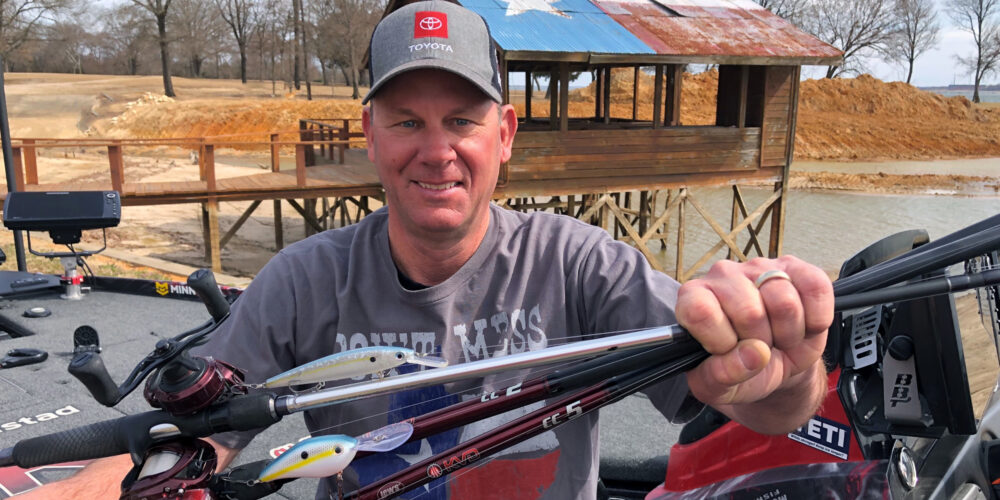As a professional angler, I make my living catching bass. But whenever an opportunity arises to fish for other species, I try to take advantage of it. Over the years I’ve learned that no matter what kind of fish I’m trying to catch, I can always take something away from the experience to make myself a better angler.
As a great example of this, I was working the Mustad booth at ICAST last year when I met a group of young fishing guides and anglers from the Pacific Northwest who specialize in catching wild sea-run salmon. These guys call themselves “Addicted Fishing” and they’ve garnered quite a YouTube following – so much of a following, in fact, they were working ICAST for Mustad as well.
I had fished for Great Lakes salmon and steelhead around Michigan over the years, so we immediately began trading fishing stories and techniques. After a couple of conversations, I scored myself an invite out to the Pacific Northwest to fish with this group of river salmon freaks. In October, I finally had some time to follow up on the unique invite and it was the experience of a lifetime.

Experts In Another World
First of all, these Addicted Fishing guys are the real deal. They’re dialed in on the salmon migration in the wild rivers during the fall and they have the hardware to get it done: a 22-foot custom aluminum boat equipped with a 225 Mercury jet motor that they use to run the rapids. It’s outfitted with a Minn Kota Riptide for spot locking in the current.
Also, their name has an inspirational double meaning: the group’s founder, Marlin LeFever, has watched the horrors of heroin addiction wreak havoc on his family. As a result, he has chosen a different addiction: chasing wild salmon up whitewater rivers with his buddies.
I spent two days with the Addicted Fishing gang running and floating whitewater rivers in Southwest Washington, catching coho and chum salmon. The scenery alone in full fall colors was stunning. On the first day, we used the 22-footer to run rapids and fish deeper pools and eddies in a large river. The second day we did a true float trip by raft down a remote river.

Translating Salmon to Bass (and Vise Versa)
During those two days, we traded a lot of information about salmon fishing and bass fishing, discovering some major common denominators.
For example, those salmon set up just like bass in rivers. They preferred the slack water and eddies produced by current breaks. It reminded me of smallmouth in a stream or catching Coosa spots in Alabama rivers. Presenting the lure just right was critical to getting the bite. You had to play the current seams and swings perfectly to get the lure in their face.
The salmon, however, were not necessarily set up to feed. Once they start their migration up the rivers to spawn, they’re not interested in feeding for the sake of eating food; rather, they are in much more of a protection mode, biting out of defensive reflex. Ironically, spawning bass are much the same way. Once they get into the spawn, they bite to defend, and you have to basically threaten them with a lure to get them to react. And as you all know, I’m all about a reaction bite!
The guys taught me a technique they call “twitching”: basically pitching an oversized 1/2- or 3/4-ounce marabou jig into eddies and jigging it aggressively to provoke a reaction bite. In fact, Addicted Fishing has designed their own line of twitching jigs for Mustad. The jigs come in an array of crazy bright colors – pinks, chartreuses, reds and purples – to add more flash and flair in the current. Again, this wasn’t about making lures look like natural food; it was about dressing lures up to look like antagonists.
Once I saw how twitching worked, I immediately dug into my tackle box and pulled out a KVD jerkbait in a pink morning dawn color. The guides had not tried jerkbaits before, so none of us knew if they would even work. But once I saw how reaction-oriented the coho were, I knew it had to work. Sure enough, within a few casts I was hooked up with a coho on the jerkbait and it continued to produce throughout the trip. That led to several discussions about the untapped potential of a jerkbait for salmon fishing.
Another parallel to bass was seeing how the salmon changed colors the farther upstream they went. When we started the float trip up in the headwaters of the river, the coho were a beautiful bright red color, or “fire truck,” as they called it. But the closer we got to the ocean and the tidal influence, the more we caught pure silver-colored salmon that had just begun their journey. In the same way, bass are often very white when they first move in off the main lake. But as they acclimate to warmer water and begin to spawn, their dark color bars become very distinct; their color alone serves as an indicator as to how long they have been up spawning.
As the trip wound down, it all reminded me of how some fundamental fishing principles can be so universal, no matter what species you fish for. During two days with the Addicted Fishing guys, we traded so much information about bass fishing and salmon fishing, we all became better fishermen because of it and I can’t thank those guys enough for such a great learning experience.
Check out full length episodes on my YouTube channel below:
https://www.youtube.com/watch?v=ofARKmXM1Xc
https://www.youtube.com/watch?v=_JiMGVYc2_8






Leave A Comment